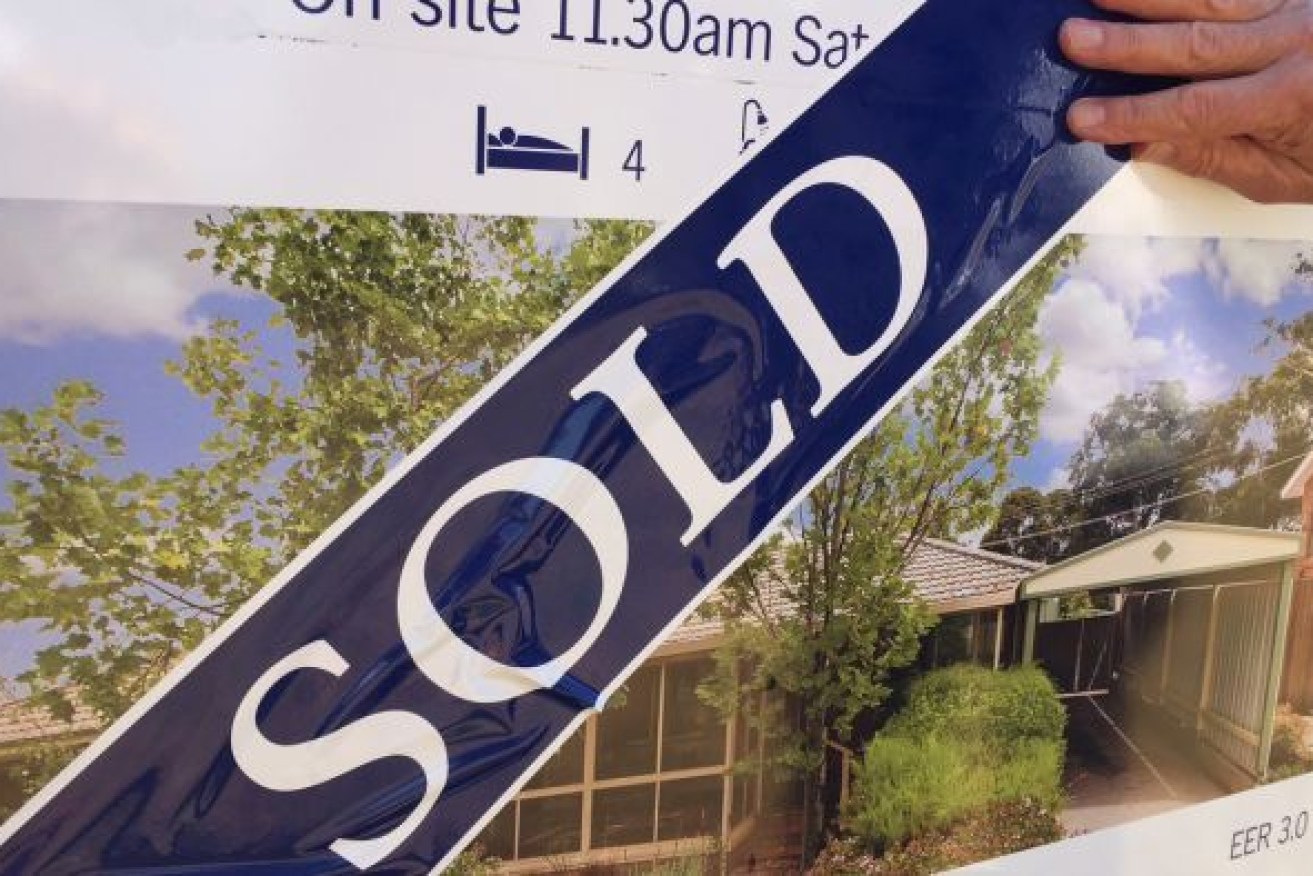Hot housing market shows first signs of cooling off


House prices are still rising across the country, but the rate slowed in April.
The rapid rise in house prices in recent months is showing signs of cooling as affordability constraints at a time of stagnant wage growth begins to dampen demand.
It will be a relief to the Reserve Bank and other financial regulators who have been keeping a watchful eye on developments in the housing market, concerned that a price bubble could lead to a deterioration in lending standards.
Even so, the nation’s four smallest capital cities – Adelaide, Hobart, Darwin and Canberra – have all shown double-digit growth in the past year.
In contrast, Melbourne is recording the lowest level of annual growth due to its extended COVID-19 lockdown in 2020.
The CoreLogic national home value index rose 1.8 per cent in April after bounding 2.8 per cent in the previous month, which was a 32-month high.
The index is 10.2 per cent higher from the COVID low last September.
“The slowdown in housing value appreciation is unsurprising given the rapid rate of growth seen over the past six months, especially in the context of subdued wages growth,” CoreLogic’s research director Tim Lawless said.
“With housing prices rising faster than incomes, it’s likely price sensitive sectors of the market, such as first home buyers and lower income households, are finding it harder to save for a deposit and transactional costs.”
Commonwealth Securities chief economist Craig James said the higher prices were also enticing more owners to list their properties and more homes were being built.
“Supply is responding to the higher demand,” he said.
“The good news is that the Reserve Bank is in no rush to lift rates, especially with inflation well contained. So buyers can continue to do their homework to find the right property, especially if new listings lift as expected.”
The trend of house prices outperforming those for units sector continued through April.
“A preference shift away from higher density housing during a global pandemic is understandable, however a rise in flexible working arrangements also seems to be supporting greater demand for houses around the outer-fringes of capital cities,” Mr Lawless said.
“Relatively weak investor activity, compounded by a supply overhang in some high-rise precincts, is also dampening price growth in unit markets.”
CoreLogic national home value index for April
- National: Up 1.8 per cent (in a month), up 7.8 per cent (annually)
- Sydney: Up 2.4 per cent, up 7.5 per cent
- Melbourne: Up 1.3 per cent, up 2.2 per cent
- Brisbane: Up 1.7 per cent, up 8.3 per cent
- Adelaide: Up 2.0 per cent, up 10.3 per cent
- Perth: Up 0.8 per cent, up 6.7 per cent
- Hobart: Up 1.0 per cent, up 13.8 per cent
- Darwin: Up 2.7 per cent, up 15.3 per cent
- Canberra: Up 1.9 per cent, up 14.2 per cent
- Combined capitals: Up 1.8 per cent, up 6.4 per cent
- Combined regional: Up 1.9 per cent, 13.0 per cent
-AAP








